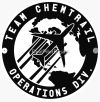Per the 7110.65AA 7-2-1a2d, it sounds like it is required. a2c is interesting too, while I don't think I've heard it done the way it was in this situation before, that part at least was by the book. a2e appears to have been missed as well.
I am not ATC nor did I stay in a Holiday Inn Express last night, so I would be happy for controllers to jump in here!
7-2-1 VISUAL SEPARATION
Visual separation may be applied when other approved separation is assured before and after the application of visual separation. To ensure that other separation will exist, consider aircraft performance, wake turbulence, closure rate, routes of flight, known weather conditions, and aircraft position. Weather conditions must allow the aircraft to remain within sight until other separation exists. Visual separation is not authorized when the lead aircraft is a super.
a. TERMINAL. Visual separation may be applied between aircraft up to but not including FL180 under the following conditions:
1. Tower-applied visual separation.
(a) Maintain communication with at least one of the aircraft involved or ensure there is an ability to communicate immediately with applicable military aircraft as prescribed in paragraph
3-9-3, Departure Control Instructions, subparagraph
a2.
(b) The tower visually observes the aircraft, issues timely traffic advisories, and provides visual separation between the aircraft.
(c) Issue control instructions as necessary to ensure continued separation between the applicable aircraft.
(d) Do not apply visual separation between successive departures when departure routes and/or aircraft performance preclude maintaining separation.
(e) The use of tower-applied visual separation is not authorized when wake turbulence separation is required.
(f) ATCTs at adjacent airports may be authorized to apply visual separation between their traffic and the other facility's traffic. All provisions of FAA Order JO 7110.65, paragraph
7-2-1a1, still apply.
NOTE- Additional requirements are listed in FAA Order JO 7210.3, paragraph 10-3-9, Visual Separation.
2. Pilot-applied visual separation.
(a) Maintain communication with at least one of the aircraft involved and ensure there is an ability to communicate with the other aircraft.
(b) The pilot sees another aircraft and is instructed to maintain visual separation from the aircraft as follows:
(1) Tell the pilot about the other aircraft. Include position, direction, type, and, unless it is obvious, the other aircraft's intention.
(2) Obtain acknowledgment from the pilot that the other aircraft is in sight.
(3) Instruct the pilot to maintain visual separation from that aircraft.
PHRASEOLOGY - (ACID), TRAFFIC, (clock position and distance), (direction) BOUND, (type of aircraft), (intentions and other relevant information).
If required, (ACID), REPORT TRAFFIC IN SIGHT or DO YOU HAVE IT IN SIGHT?
If the pilot reports traffic in sight, or the answer is in the affirmative, (ACID), MAINTAIN VISUAL SEPARATION
NOTE-Towers must use the procedures contained in paragraph
3-1-6, Traffic Information, subparagraph b or c, as appropriate.
(c) If the pilot reports the traffic in sight and will maintain visual separation from it (the pilot must state both), the controller may “approve” the operation instead of restating the instructions.
PHRASEOLOGY - (ACID), APPROVED.
NOTE - Pilot-applied visual separation between aircraft is achieved when the controller has instructed the pilot to maintain visual separation and the pilot acknowledges with their call sign or when the controller has approved pilot-initiated visual separation.
(d) If aircraft are on converging courses, inform the other aircraft of the traffic and that visual separation is being applied.
PHRASEOLOGY - (ACID), TRAFFIC, (clock position and distance), (direction) BOUND, (type of aircraft), HAS YOU IN SIGHT AND WILL MAINTAIN VISUAL SEPARATION.
(e) Advise the pilots if the targets appear likely to merge.
NOTE - Issue this advisory in conjunction with the instruction to maintain visual separation, the advisory to the other aircraft of the converging course, or thereafter if the controller subsequently becomes aware that the targets are merging.
EXAMPLE-“Targets appear likely to merge.”
(f) Control of aircraft maintaining visual separation may be transferred to an adjacent position/sector/facility. Coordination procedures must be specified in an LOA or facility directive.
You have logo lights on a 182?!?

I hope you have a logo. If not, maybe we can all kick in to put a PoA logo on your tail.




 Looking through the lighting for 19 (which might have been 18 then?) it was hard to pick out the lights for that southwest runway and the captain got us too low before we could spot it. He tried to turn to line up after we got it in sight but was too low for my comfort. Didn't take much convincing for him though.
Looking through the lighting for 19 (which might have been 18 then?) it was hard to pick out the lights for that southwest runway and the captain got us too low before we could spot it. He tried to turn to line up after we got it in sight but was too low for my comfort. Didn't take much convincing for him though.

